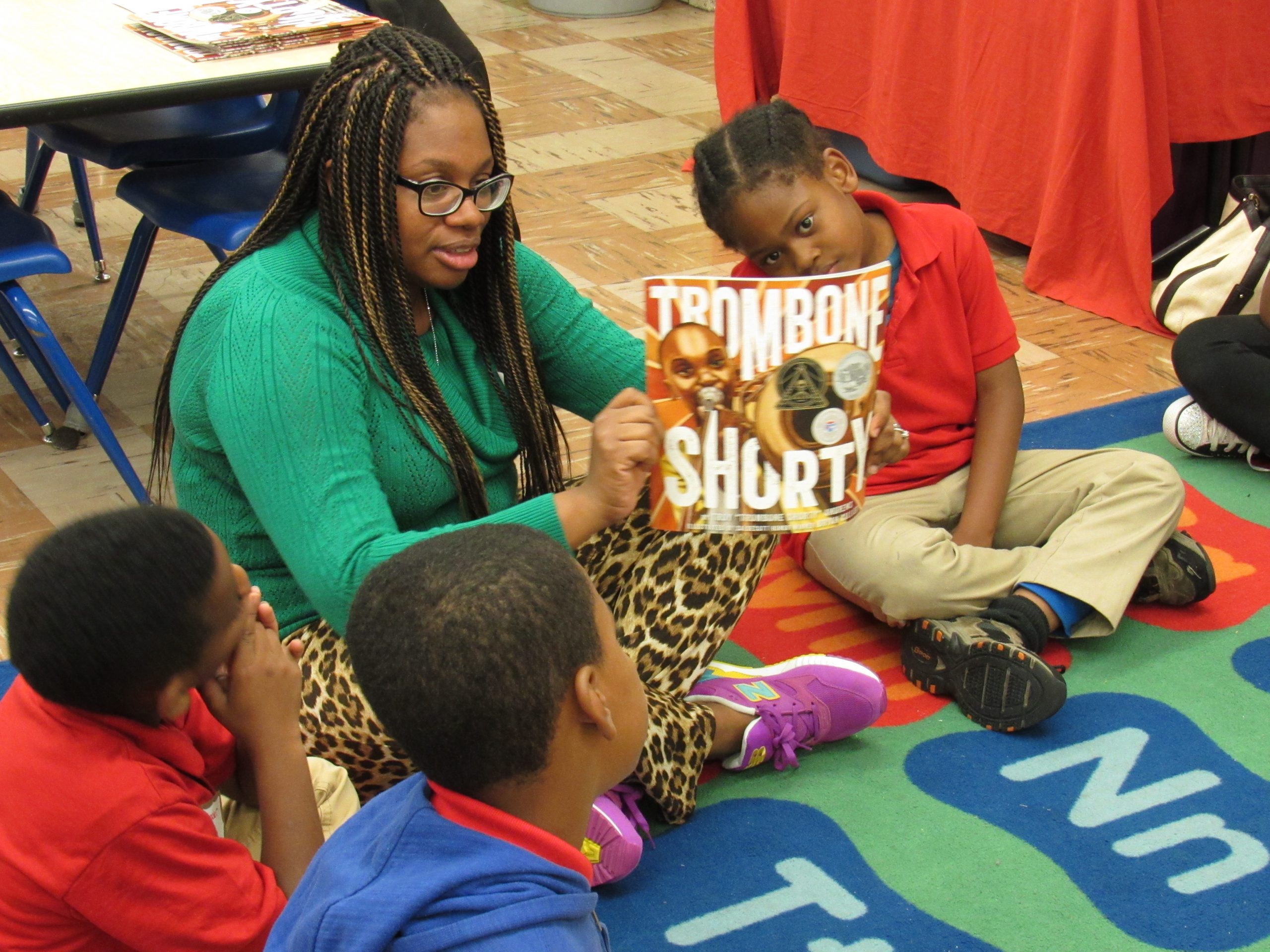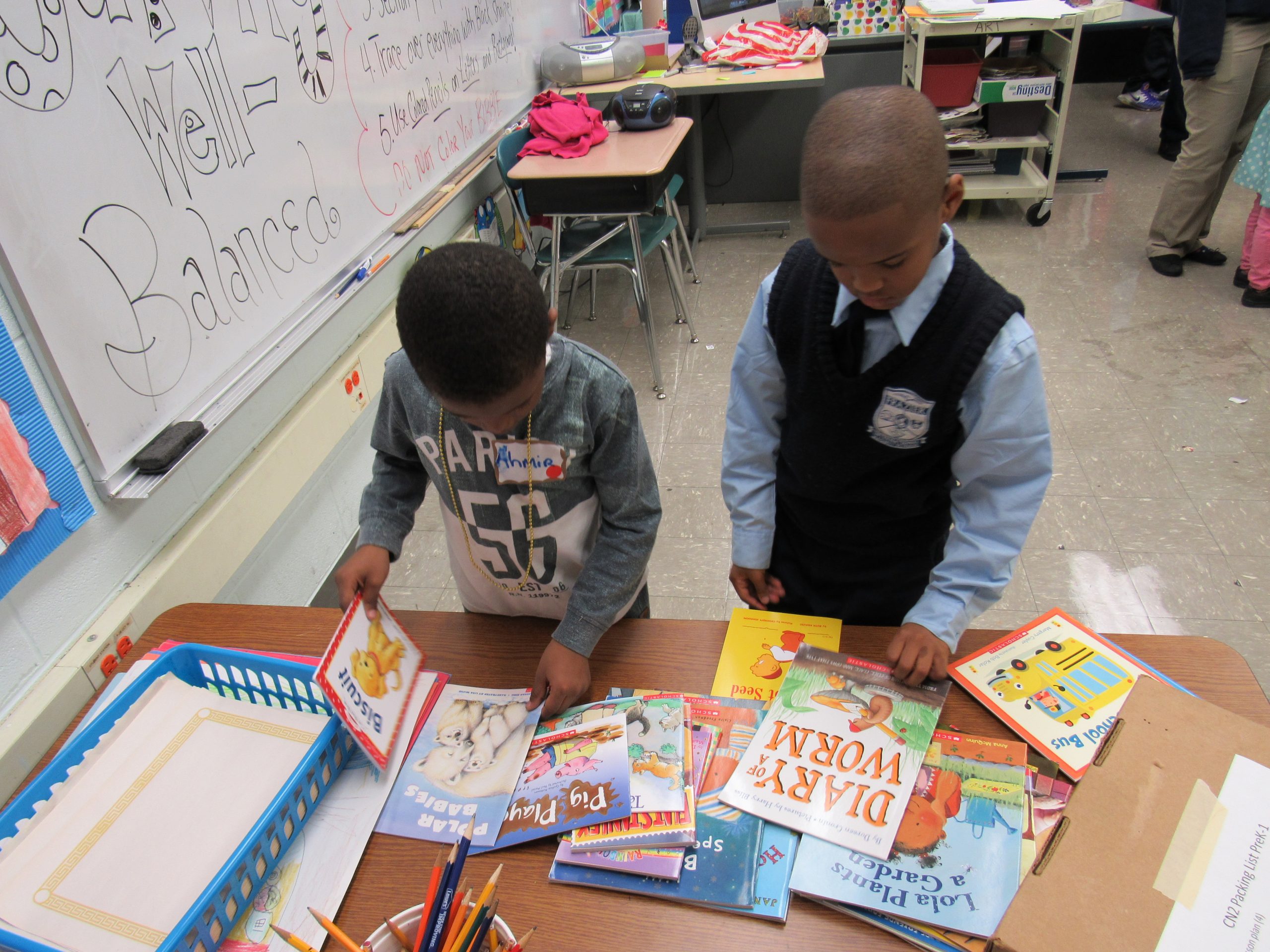
Between work and caring for children, parents want to make the most of their time. For busy families, reading together is time well spent. When you read with your child, you have a chance to bond, relax and learn at the same time. Your child will become a more confident reader and this practice at home will help her meet reading standards at school. All of these benefits come from reading a book together each day.
“We find time for reading, because it’s showing that it has helped him in school,” Turning the Page parent, Lakisha Williams-Looney said when asked why she reads with her son. She’s a parent at Joseph Kellman Elementary who attends Turning the Page Community Nights.
At each Community Night, we give parents tips they can use while reading with their child. Ms. Williams-Looney said these tips changed the way her 6-year-old son Takhari reads.
Reading Tip #1
Authors use punctuation to communicate emotion in their stories. Explain what different punctuation marks mean to your child and use punctuation to read with more expression.
Ms. Williams-Looney showed her son how punctuation expresses the emotions of characters and the highs and lows of a story. Together they raised their voice when reading sentences that ended in exclamation points and emphasized dialogue in quotation marks.
Practicing this tip together changed the way Takhari reads. He’s no longer only reading words, but paying attention to what the words really mean and what is happening in the story.
“If he’s reading in public, people actually are impressed with the way he’s reading,” Ms. Williams-Looney said.
Reading Tip #2
“Popcorn” read with your child to bond over a book and share in reading together.
At a Community Night, Ms. Williams-Looney and other parents “popcorn” read a story together, by reading a page each. She tried reading this way with her son and Takhari loved taking turns reading with his mom.
“Especially with him having a younger sibling who takes most of the time, this is our one-on-one time together, so he looks forward to it,” Ms. Williams-Looney said.
Reading Tip #3
Make time for reading every day.
Now that Takhari is old enough to read books on his own, Ms. Williams-Looney makes sure he reads every day and that they read a book together a few times each week. He reads a book out loud each night, whether it’s at the kitchen table while his mom cooks dinner or to his little sister.
“He always has to come tell me when he’s done reading and I ask him questions, to make sure he understands what he read,” Ms. Williams-Looney said.
Reading Tip #4
When the family’s schedule is busy, try reading on-the-go or away from home.
Reading together is most beneficial in a quiet spot at home, but if the family has a busy day, Ms. Williams-Looney brings books with her.
“Sometimes if I remember, I bring a book in the car and have him read it to his sister, so we can get it in when we’re not at home,” Ms. Williams-Looney said.
Reading at home has helped Takhari become the best reader in his first grade class. He reads at level F, well above the standard first grade level D.
For Takhari, the benefits of reading with his mom will go beyond being a strong reader in the first grade, especially as a student in North Lawndale, where the U.S. Census recorded approximately 42% of families live in poverty.
Early literacy impacts a child’s success in school and in life after. Even high school drop-out rates are tied to early literacy rates. Students who live in a low-income neighborhood and have trouble reading are 10 percent less likely to graduate (Double Jeopardy, How Third-Grade Reading Skills and Poverty Influence High School Graduation, 2012.)
Find a few minutes to read with your child each day and you’ll see the benefits of this time well spent years after you put the book down.

Ms. Williams-Looney and her son Takhari
